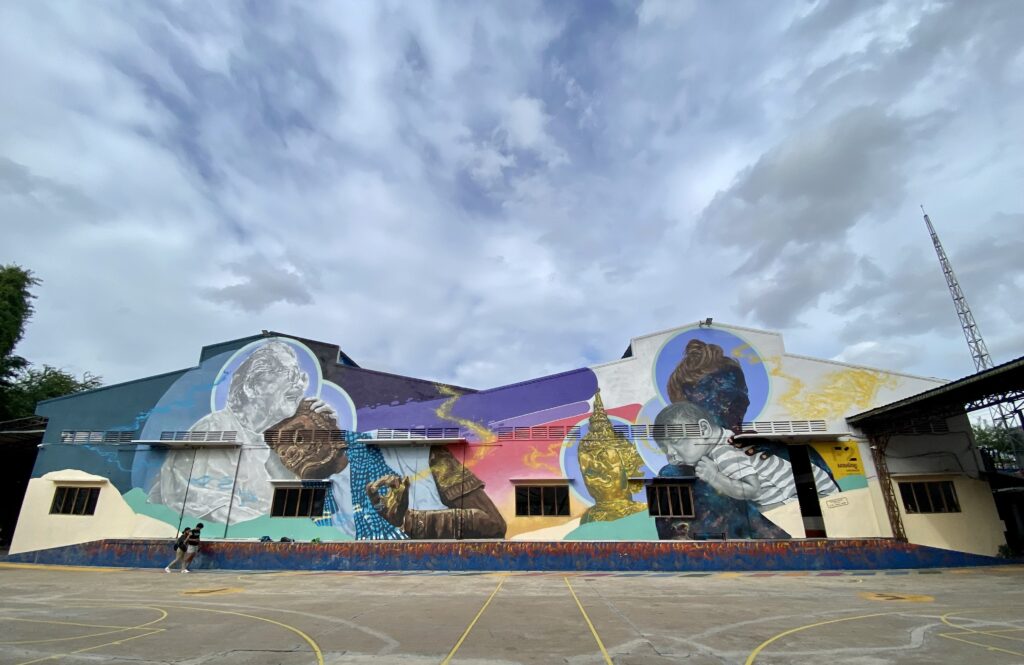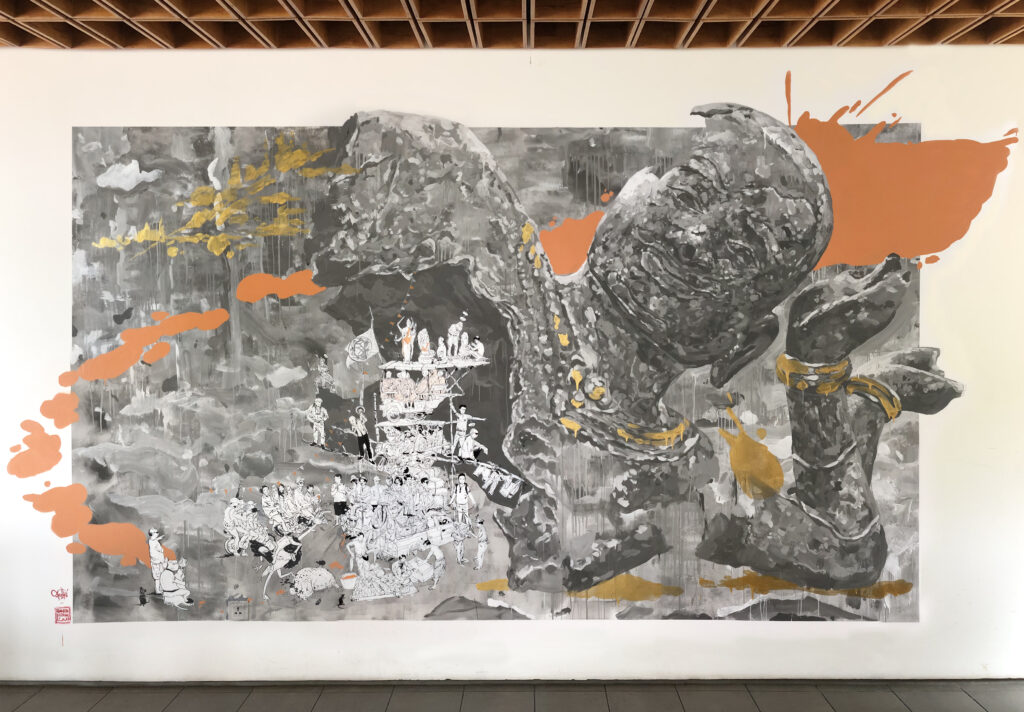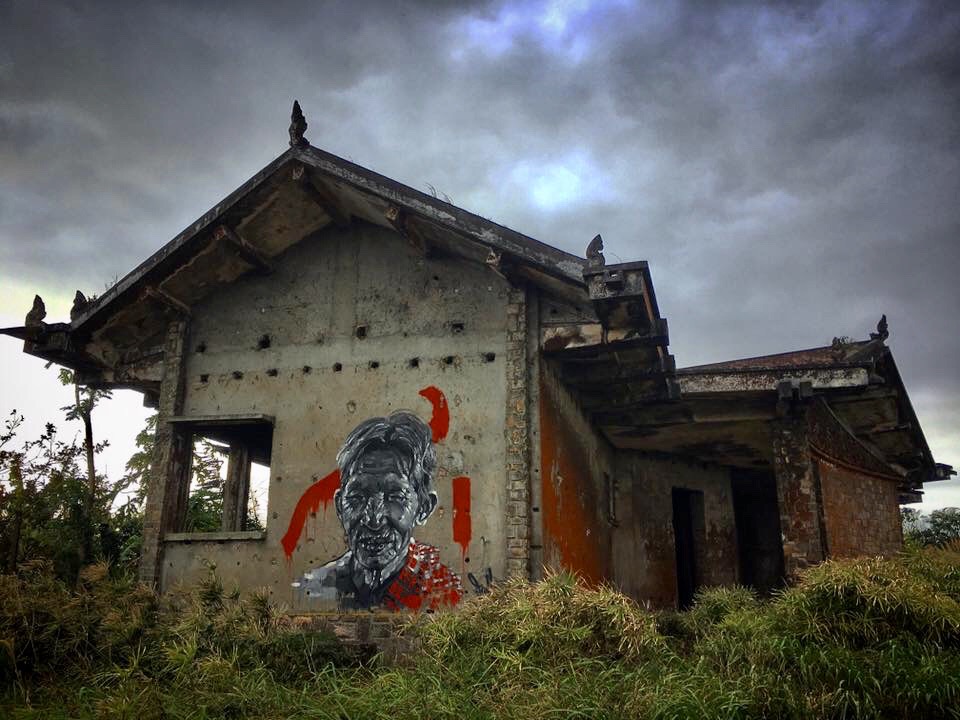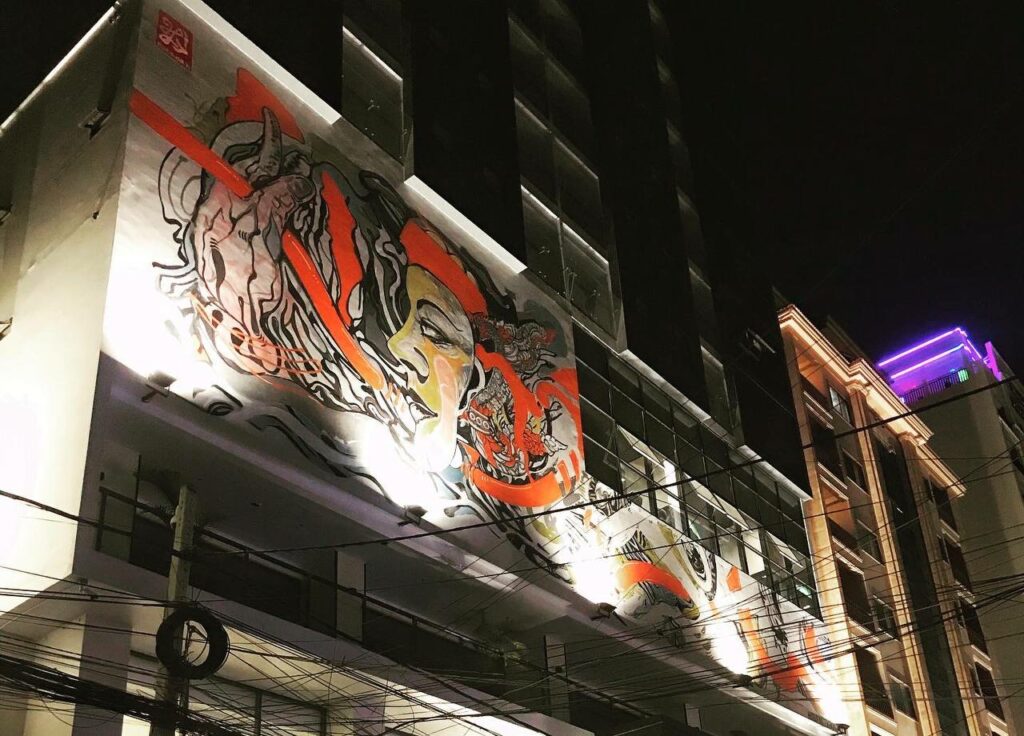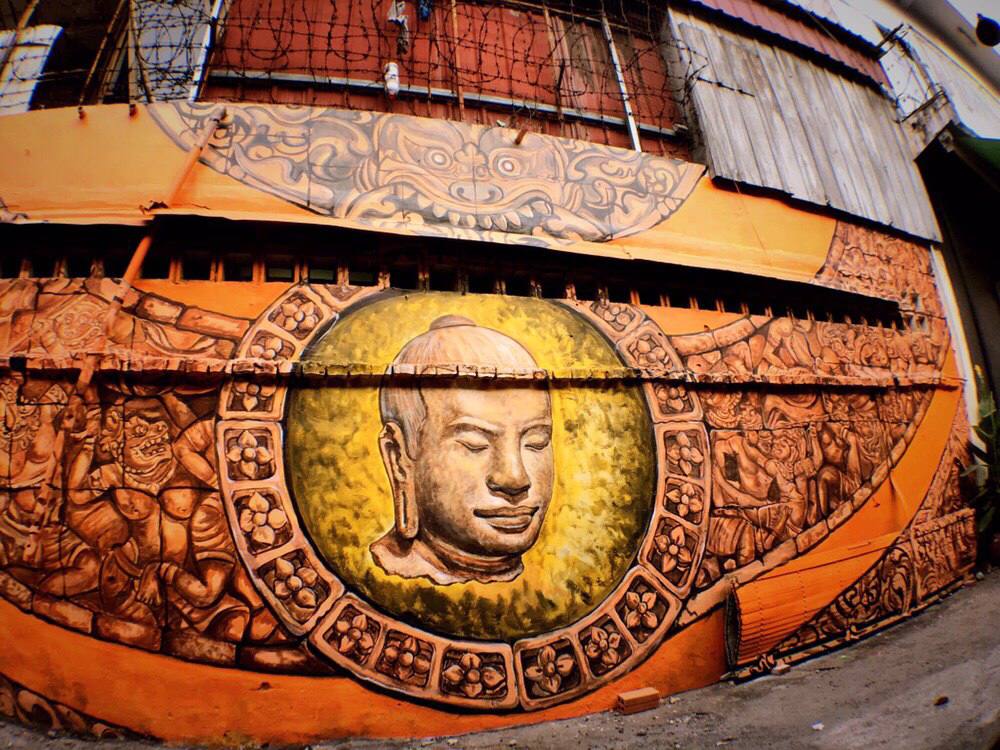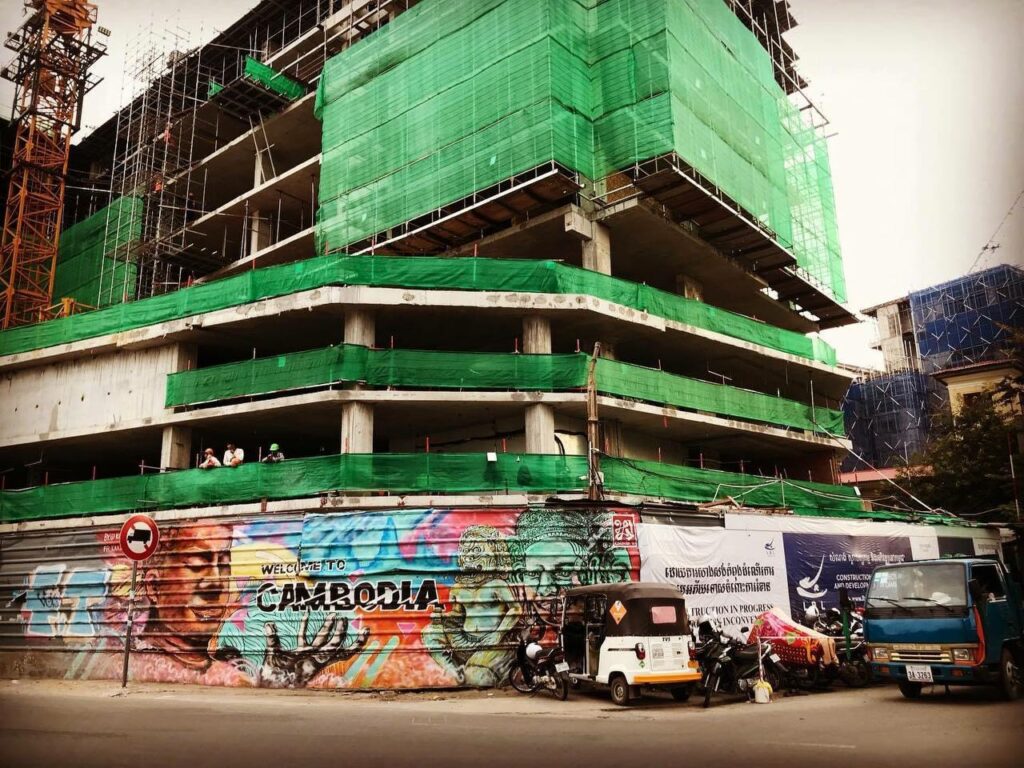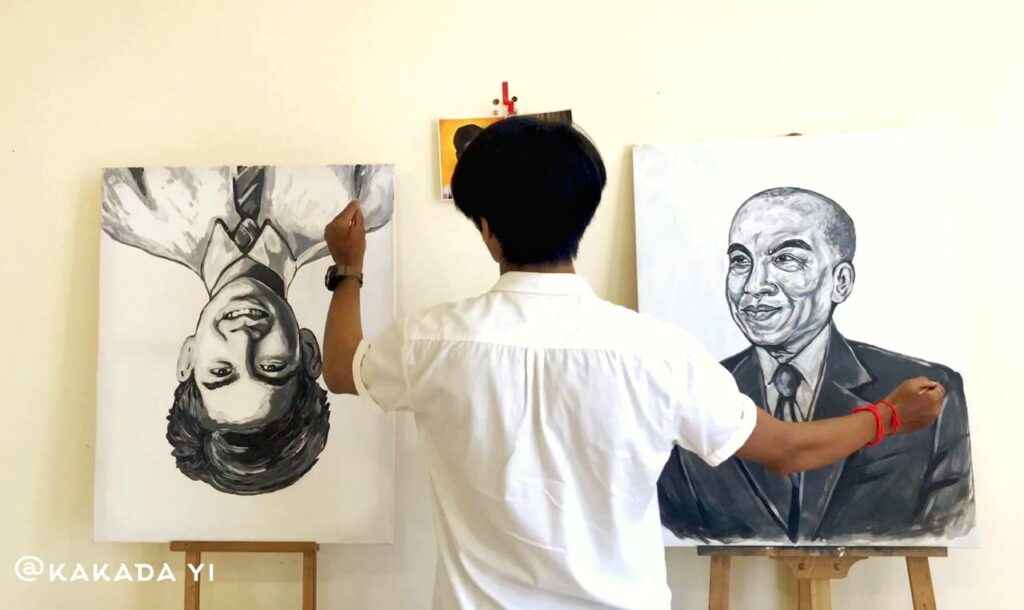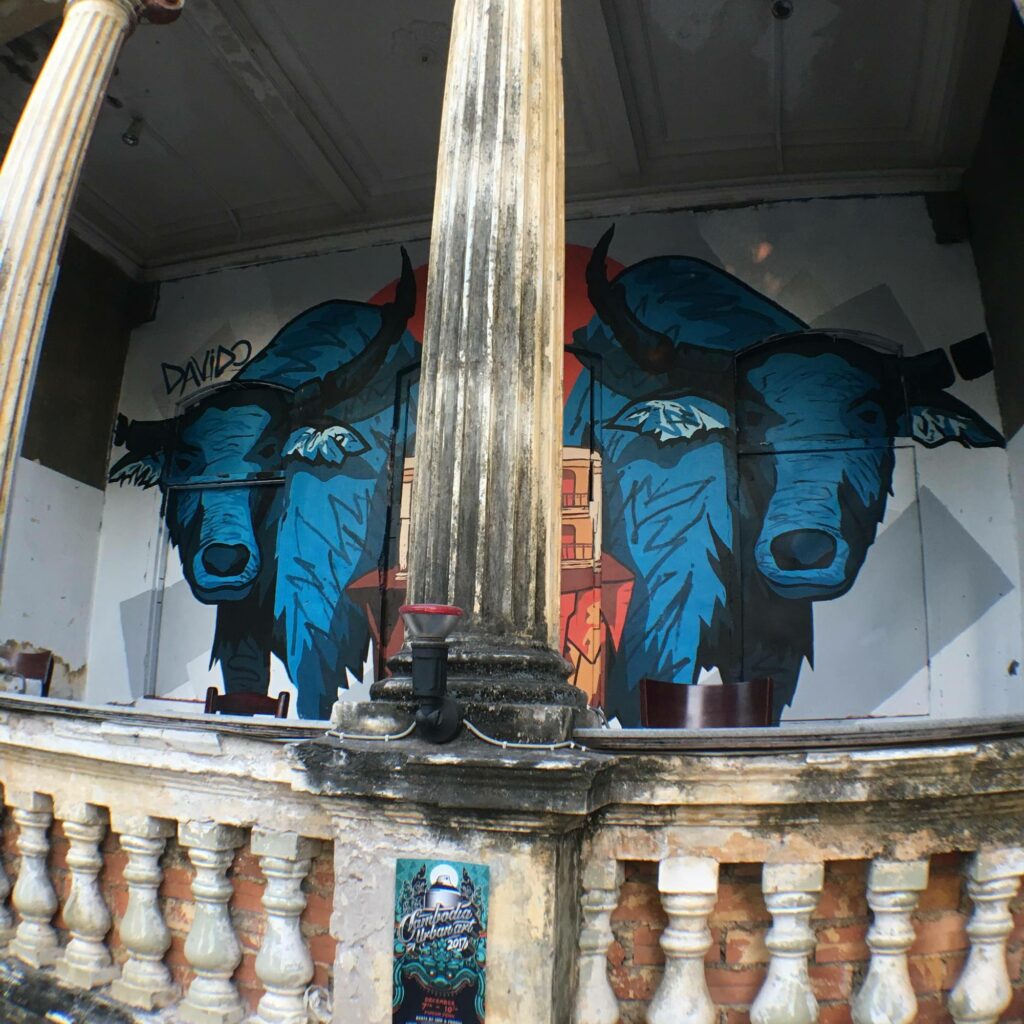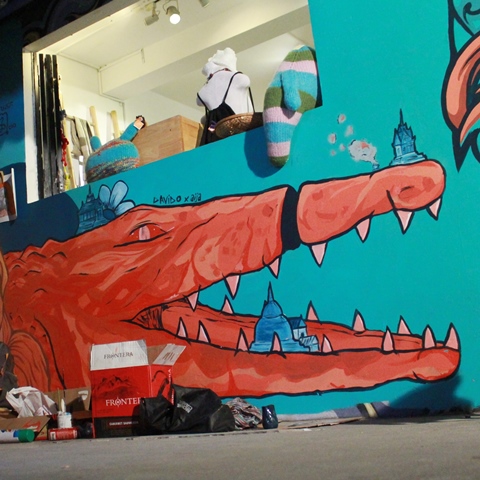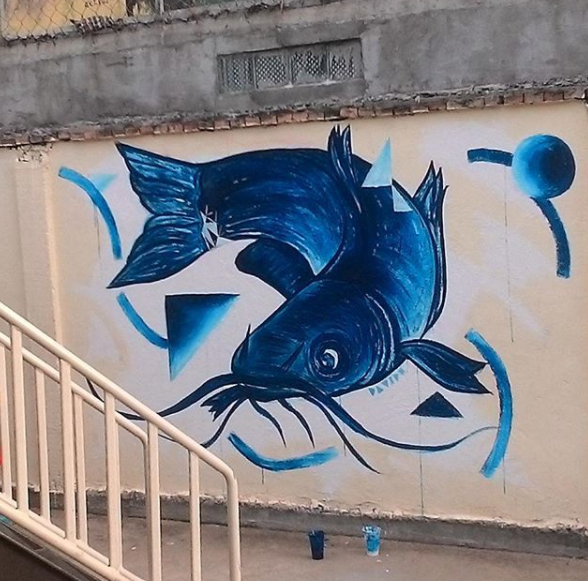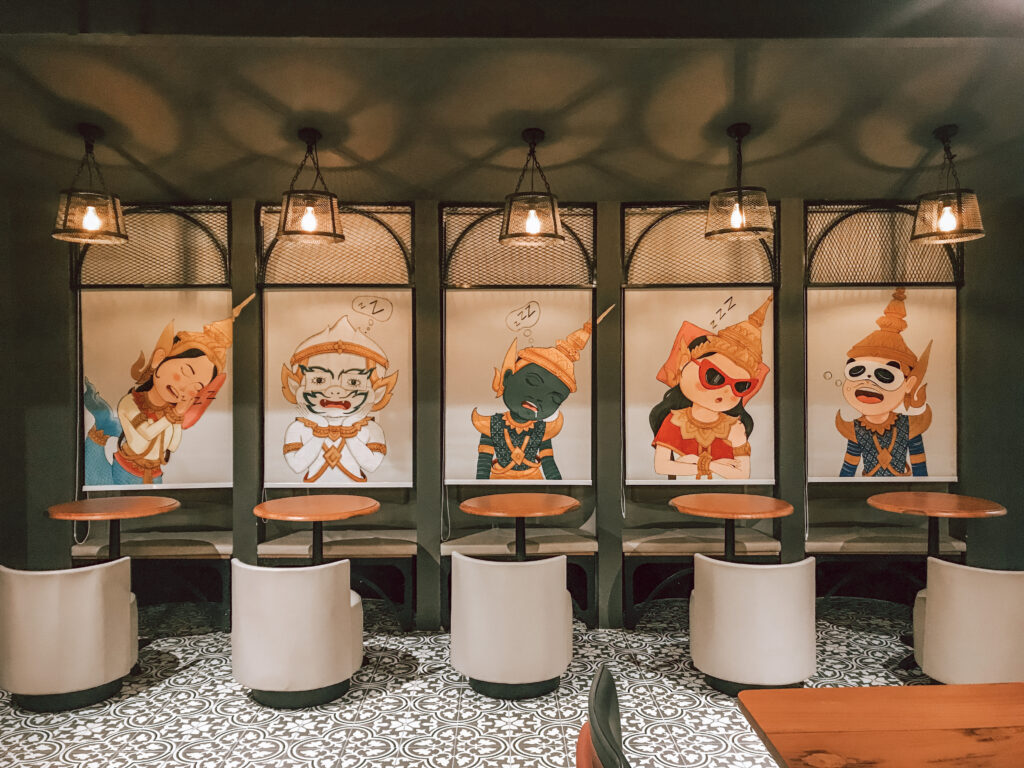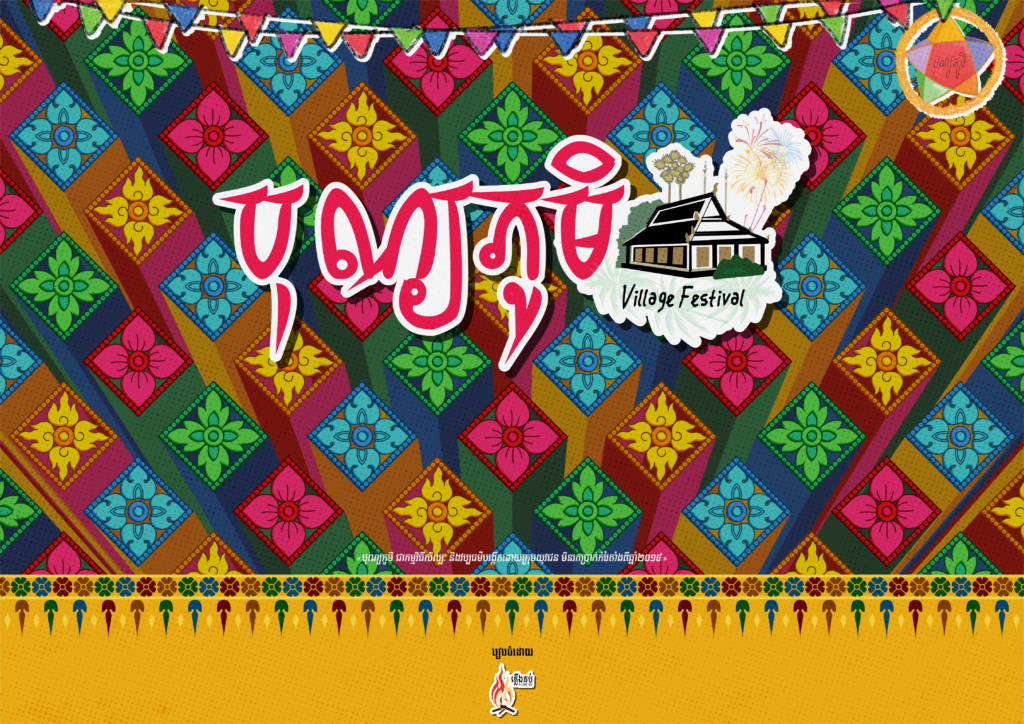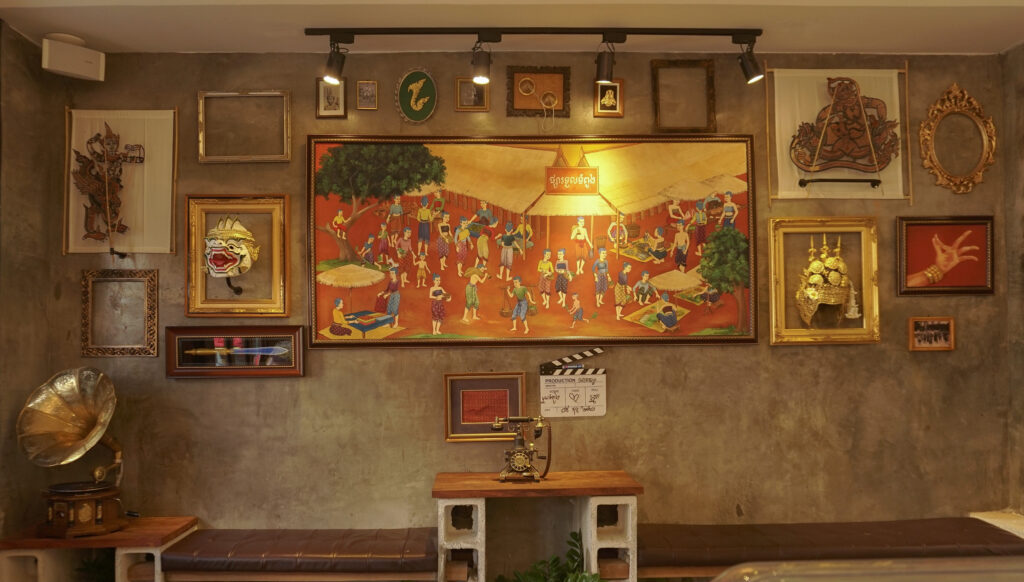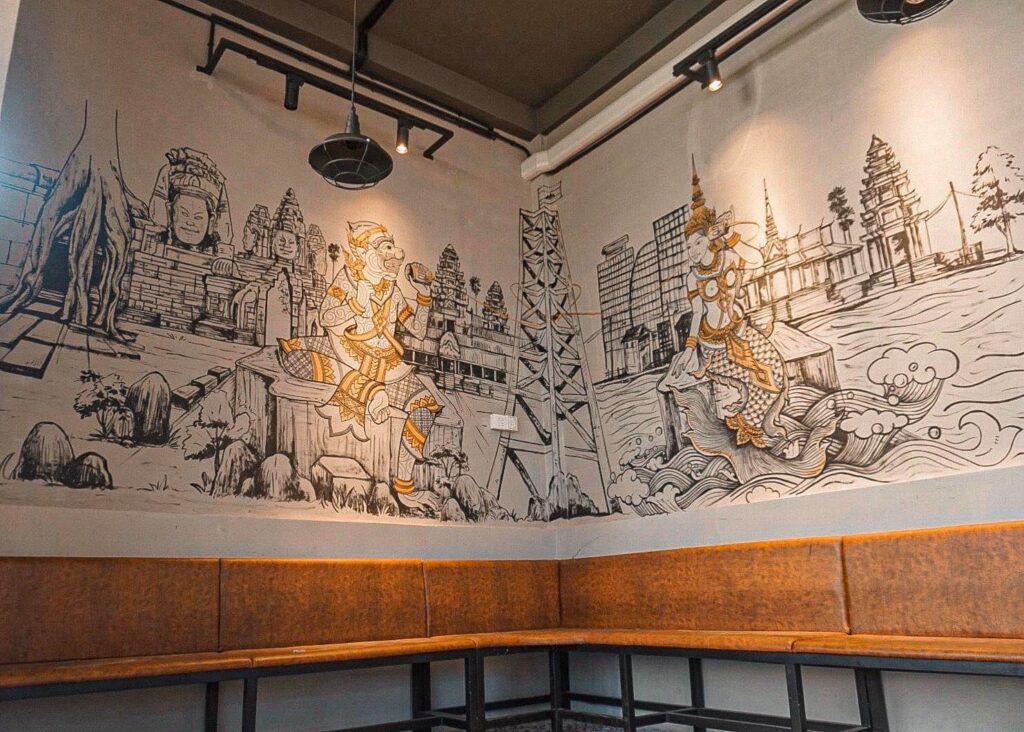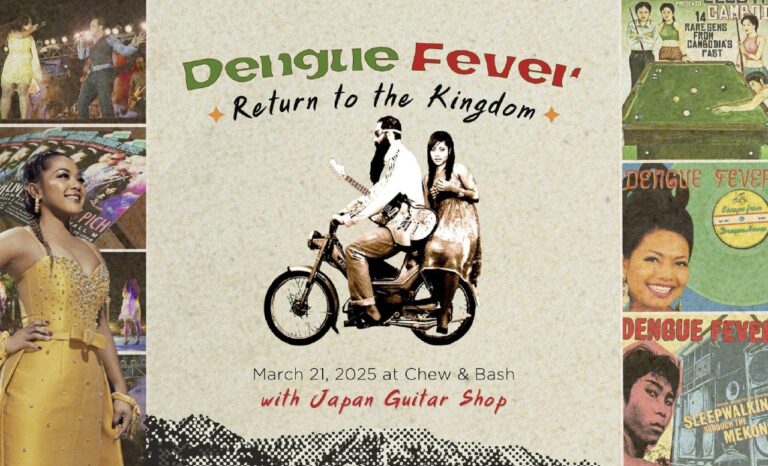Now we see a lot of contemporary artists who are the leaders of the current Khmer cultural renaissance movement reviving the once groundbreaking art scene we had in the 1960s by revitalizing and recovering our rich and ancient culture and ushering Cambodia into a new, exciting era.
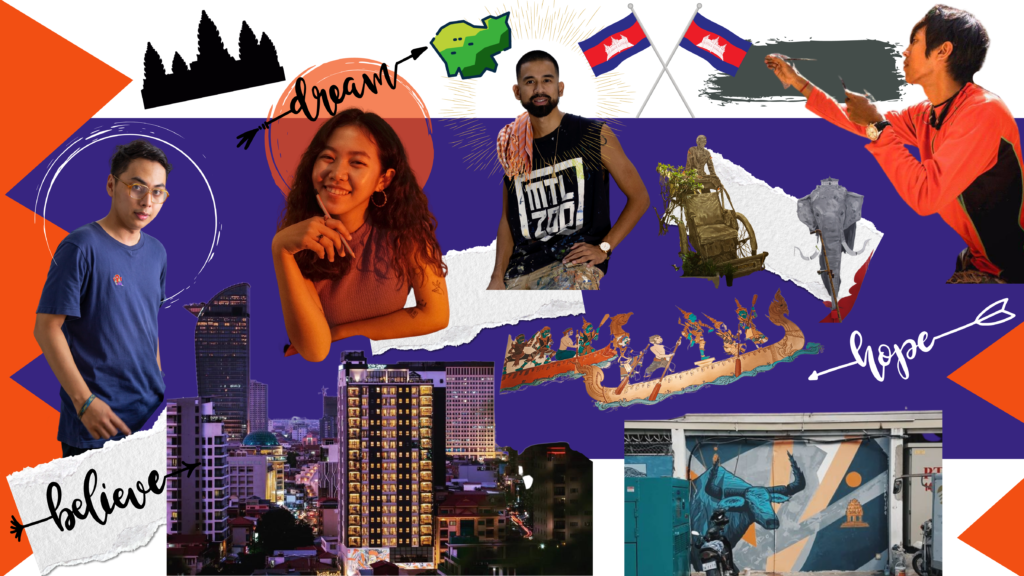
Some people say “our culture defines us and who we are” and others argue that “we define our own culture”. Both are true in their own way, as our ancestors created the culture we have today and we are the ones who create a new culture for the next generations built on these same foundations.
In Cambodia, Khmer people, especially the young generation, have their own thinking and lifestyle, which is different from the old generation, however, the things that don’t change are their roots, history, identity and heritage. The same applies to the rising art scene.
Now we see a lot of contemporary artists who are the leaders of the current Khmer cultural renaissance movement reviving the once groundbreaking art scene we had in the 1960s by revitalizing and recovering our rich and ancient culture and ushering Cambodia into a new, exciting era. It’s no longer an odd sight to see colorful art on the streets of Phnom Penh. Art exhibitions and events are held almost every weekend, hip-hop is blended with Khmer traditional music and high quality films with amazing cinematography are getting international recognition.
This renaissance in Cambodia’s art scenes led to the birth of a new creative hub called “KampumEra” in April 2021, which aims to raise awareness about Cambodia’s unique identity and culture, as well as the importance of preserving the natural environment.
Created to show that young Cambodians have a visceral attachment to their origins, their traditions, and their land, KampumEra challenges the idea that the younger generation doesn’t care about preserving their heritage. On the contrary, they feel a powerful urge to preserve and pass on their heritage, just in their own unique way.
Besides introducing various new generations of artists on social media in order to bring public attention to their craft, KampumEra has partnered with 4 influential street artists for the “Make Our Own Luck” campaign. The campaign will be held across their social media throughout August.
With the belief that “Our past doesn’t dictate our future anymore. We are the masters of our lives. We are the builders of our future”, the campaign presents participants with the opportunity to fully engage communities by sharing their dreams, goals and the changes they want to see for Cambodia’s future. The public response will allow the artists to interpret Cambodian hopes and dreams into mural artworks called ‘Wall of Hope’.
Find out how you can get involved by following the KampumEra’s Facebook and Instagram page!
Spotlight on Artist
FONki
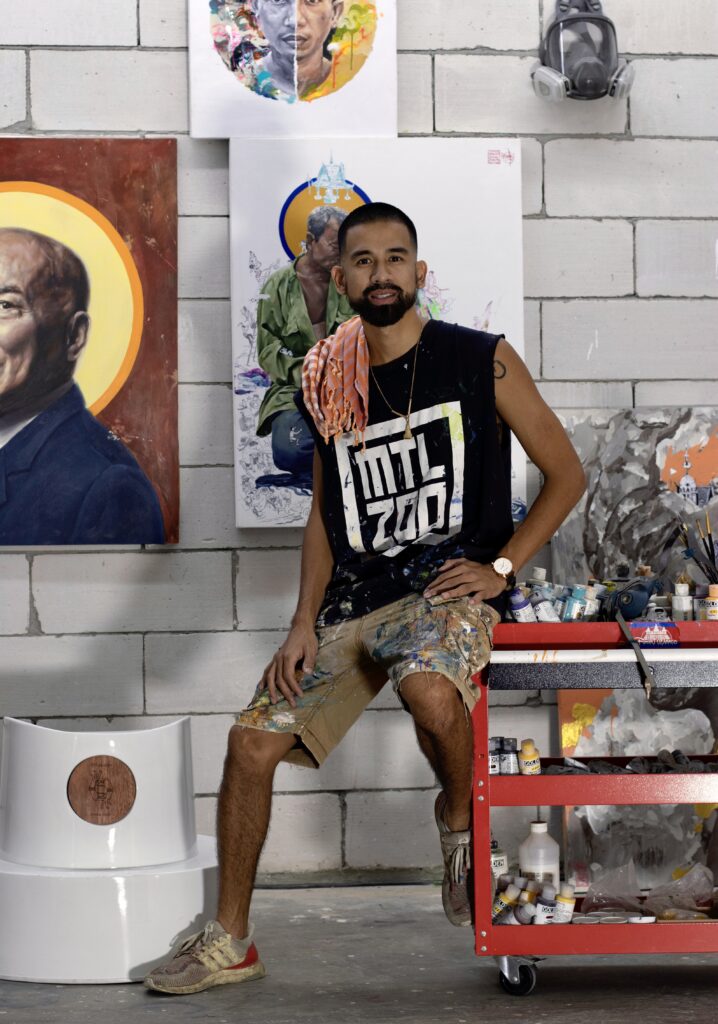
“We [Khmer] are into a Renaissance. I want to create something that is our tradition, but make it a new tradition. What we are doing might be contemporary today, but it might be the tradition of tomorrow.”
Going by the name FONki, the 31 year old Khmer-French graffiti artist held his “Khmer Renaissance” exhibition back in November, 2019 with the purpose of reflecting on Cambodian people from different generations, backgrounds and social classes.
Created as a platform where old meets new, “Khmer Renaissance” reflects ancient Khmer culture and heritage alongside the rapid modernization we experience today, where high rise buildings are built one after another and many aspects of daily life are being re-imagined in the face of technology.
Growing up in Montreal, Canada with Cambodian parents, FONki discovered his love for street art when he discovered graffiti culture at 15 years old. However, he was always exposed to Khmer art as he grew up seeing Khmer traditional dance in his neighborhood, as well as Khmer sculpture, painting and music in his home.
“My love for Khmer art is so big and you know it’s like a lifetime process,”Fonki said. “Khmer art and aesthetic has unconsciously always been around me when I grew up because my parents are involved in the cultural field. It’s every Sunday I would go practice folkloric and traditional dance (to dance in Cambodian festival and khmer new year in Canada)”
To honor his roots, FONki is always seen incorporating Kbach — Khmer traditional ornamental elements– into his craft. “I want to create something that is our tradition, but make it a new tradition,” he said. “What we are doing might be contemporary today, but it might be the tradition of tomorrow.”
Graduating with a bachelor’s degree in cinema, Fonki went back and forth between Cambodia and Canada for internships, documentary filming and other creative art projects from 2012 to 2015, before permanently moving to Phnom Penh in 2017.
And it was living in Phnom Penh that made him realize there was a new narrative beyond Angkor Wat and the Khmer Rouge. There was something new and refreshing happening in Cambodia, but he did not let go of his roots and artistic foundations, citing Klapyahandz and artists like Liza Mam and Peap Tarr as influences.
“We [Khmer] are into a Renaissance,” he said. “We are still in it now where there are more and more artists coming forward to build something of their own. So, I feel very positive about the future.”
Kakada Yi
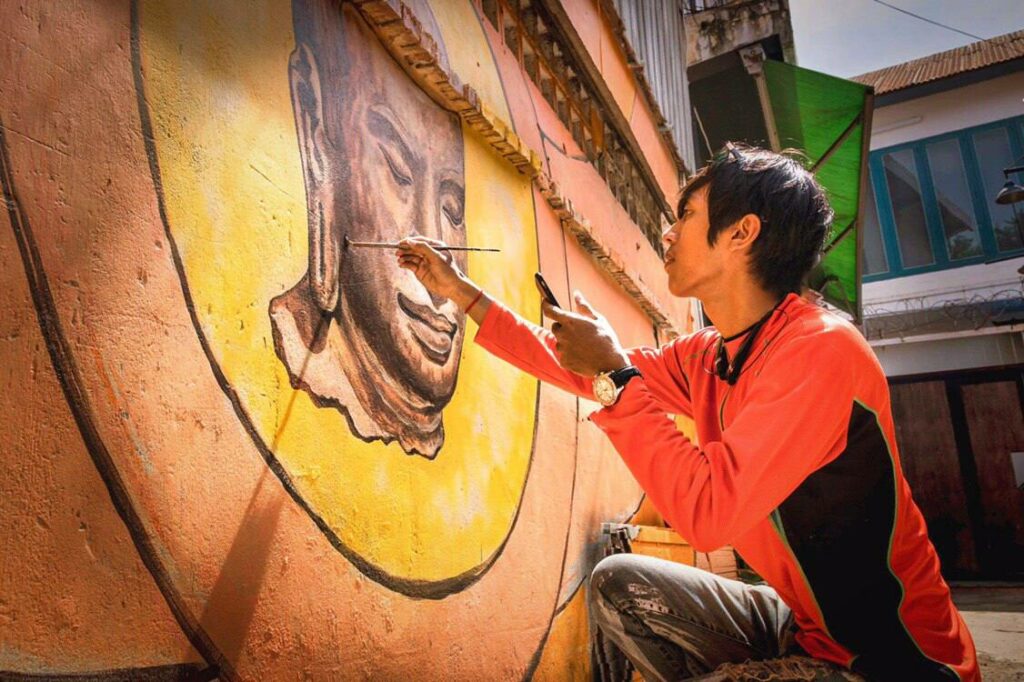
“Rather than canvas drawing, I enjoy street art because I can showcase my work and convey my message to a wider audience, from all ages and backgrounds. Even to foreigners because from that they will be curious about Khmer traditional art and want to learn more.”
Known for his amazing ability to draw using both hands, Kakada Yi, 26, is a self-taught Khmer artist who wishes to spread Khmer culture’s long and rich tradition through street art.
“Rather than canvas drawing, I enjoy street art because I can showcase my work and convey my message to a wider audience, from all ages and backgrounds,” he said. “Even to foreigners because from that they will be curious about Khmer traditional art and want to learn more.”
Born and raised in Battambang, as a child Kakada was first exposed to the vivid wall paintings of Khmer stories in a pagoda and has always received praise for his drawing by his peers, some of whom even asked to buy his drawings.
Due to financial hardship after the loss of his parents, Kakada dropped out of high school and travelled to different provinces before ending up in Phnom Penh with his siblings to seek job opportunities. However, thanks to his creative talent he was recommended to join an art competition organized by UNESCO where he won 1st place in the “Asain Drawing Category.”
Staying true to his goal of spreading Khmer art, his drawings often center around traditional dance, ancient sculpture, and legendary Khmer singers.
He said being a full-time artist is not easy, however, he wants to keep working in the field to show people what local artists can do. “Not only foreigners have talent to paint creative murals on walls,” he said. “Khmer also have enough human resources and creativity. We just lack public support.”
Putting his passion in art before money, he continued, “I’m going to keep doing what I am doing.” And for young people, his advice is to put their love for art before aiming to get rich from their art. “If you know you want to pursue art, just come do it so that we can have more creative human resources.”
The Davido

“When you paint in the street, the exhibition [space] is the street itself. When I paint things, I would meet people who would never step foot in the gallery. And, usually they would ask me about my art. They would criticize. I would explain to them. So, they get to know more about art and my style.”
Driving around Phnom Penh, if you see murals of blue and orange animals there is a high chance that it’s done by 23 years old artist, Davido.
With a love of art that started when he was 7 years old, his official painting journey began when his friend asked him to paint on a wall when was 15. After that, he started to learn more about art through hands-on experience and experimentation, preferring to use house paint instead of expensive spray cans. That same year he was invited to the first “Urban Art Festival” in Cambodia where he was the youngest artist.
Noticing that not many art gallery and exhibition goers are local Cambodians, but rather foreigners and the expat community, he thinks street art allows him to showcase his craft to a wider audience, especially local Cambodians.
“When you paint in the street, the exhibition [space] is the street itself. People of any walk of life, from any background are able to see the art. So, we can actually communicate with people,” he explained.
Describing his work as surreal, Davido usually paints animals, often in blue and orange, and while he doesn’t draw Kbach or Apsara, one way he shows his Khmer identity is by having animals that are unique to Cambodia.
“I like to add animals because ever since I was young, I always wanted to care for animals because I think they are important and valuable to Cambodia.”
Now also working as a product design teacher after his university graduation last year, he described doing art and teaching as his personal self-fulfillment because they allow him to share his knowledge and message. And he believes street art can spark conversations about art with regular people.
“When I paint things, I would meet people who would never step foot in the gallery,” he explained. “And, usually they would ask me about my art. They would criticize. I would explain to them. So, they get to know more about art and my style.”
Eng Elyna

“Classic is not slow-moving nor unhurried. Modernity is not foreign nor non-native.”
Having a different art background and being relatively new to the Khmer art scene compared to the other three artists, Eng Elyna, 24 is an independent artist, graphic designer and illustrator who also goes by “Kmeng Lyna”.
Earning a degree in Design Communication from Royal University of Fine Arts (RUFA), which exposed her to many Khmer art forms, Elyna got involved in graphic design in 2017. Her love for Khmer art, culture and tradition as well as drawing grew deeper when she volunteered for Bonn Phum (Village festival), an annual festival held by Plerng Kob where she is now Art Director.
However, her family has not always been supportive of her career choice and the fact that she chose to study in art school.
“My parents didn’t even support my university major choice back then for fear of no income and lack of job opportunities,” she explained. “Little by little, they started to be okay as I was able to land some art gigs ever since my university days.”
For her art style, be it illustrations or murals, she often draws using the traditional form of painting (Komnu Boran) blended with her own imagination and creativity. “My drawing is mostly for younger generations, so I tried to make it look attractive yet still has Khmer style and character in it. Classic is not slow-moving nor unhurried. Modernity is not foreign nor non-native.” she said.
Elyna has also noticed that some young people feel like the culture or tradition preservation is the duty of older people but she wishes to slowly change their mindset through her art.
“I want people my age and younger to learn more about Khmer culture and tradition through my art. So I’ve tried my best to seek balance by drawing an old Khmer drawing style that looks interesting to them.”

